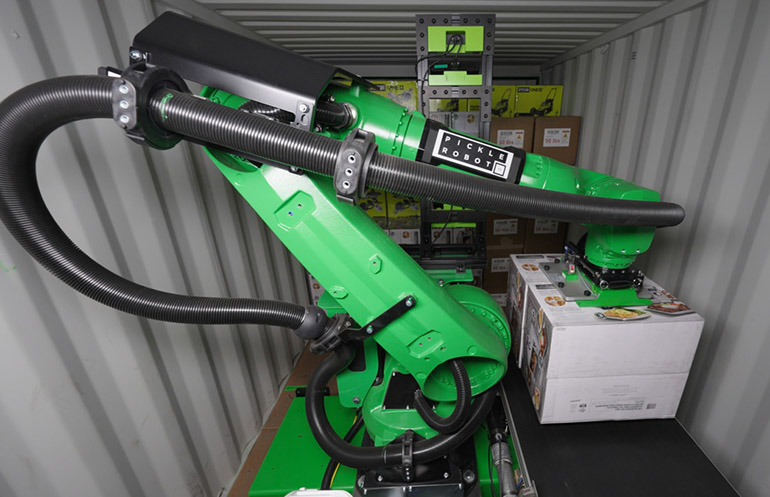The HAND project at the new Engineering Research Center will develop dexterous robot hands to assist with manufacturing and more. | Source: Northwestern University
The human hand is made up of 27 bones, 27 joints, 34 muscles, and more than 100 ligaments and tendons. With all of that hardware, it’s no surprise that roboticists have struggled to equal that level of dexterity. With a $26 million grant from the National Science Foundation, Northwestern University will launch a new Engineering Research Center, or ERC, focusing on improving the ability of robots to amplify human labor.
The Human AugmentatioN via Dexterity (HAND) ERC plans to develop a robot hand with the dexterity to assist humans with manufacturing, caregiving, handling precious or dangerous materials, and more. The center said its goal is to build robots capable of intelligent and versatile grasping, fine motor skills, and hand-eye coordination. It also intends to develop technologies that are versatile and easy to integrate.
“This new NSF award is a historic milestone that builds on Northwestern’s well-recognized expertise in robotics and human-machine systems,” stated Eric Perreault, vice president for research at Northwestern University. “The HAND proposal is bold and visionary.”
“It will have a long-lasting, positive effect on manufacturing, food processing, healthcare and many other areas that rely on dexterous manipulation,” he added. “Ed Colgate, Kevin Lynch, and their exceptional colleagues across Northwestern have built a world-class team of industrial and academic partners to ensure this cutting-edge research creates practical outcomes.”
The NSF grant will fund the new center across five years, with the ability to renew for another $26 million for an additional five years. This marks the first ERC led by Northwestern.
Core partners include Carnegie Mellon University, Florida A&M, and Texas A&M. Additional faculty support is coming from Syracuse University, the University of Wisconsin-Madison, and the Massachusetts Institute of Technology.
Researchers plan to improve robot utility
While robots already play an important role in manufacturing and can improve workers’ job quality and raise their wages, Colgate said their full potential has been limited. Developing robotic hands that are as versatile and dexterous as human hands will enable robots to expand human capabilities and boost industry competitiveness, he said.
But dexterity isn’t the new center’s only goal. The researchers said they also want to ensure that new robotic hands are inexpensive, easy to operate without expertise, robust, durable, and ready for mass production. The robotics researchers plan to work across disciplines to engage experts in education, policy, and accessibility.
Northwestern touted potential benefits including increased worker productivity, improved job opportunities, reshoring of manufacturing, and reduced supply chain vulnerability. Other potential outcomes include enhanced food safety, improved quality of life, and democratization of technology.

The HAND ERC research is working to AI-powered dexterous skills. Source: Northwestern University
Researchers come from across Northwestern University
An expert in robots and haptics, J. Edward Colgate, a Walter P. Murphy Professor of Mechanical Engineering at Northwestern’s McCormick School of Engineering, will lead the center.
Kevin Lynch, a professor of mechanical engineering at McCormick and director of Northwestern’s Center for Robotics and Biosystems, will serve as the center’s research director.
Other collaborators at the university include McCormick’s Brenna Argall, Jian Cao, Matthew Elwin, Elizabeth Gerber, Todd Murphey, and Ryan Truby and the School of Education and Social Policy’s Lois Trautvetter.
About the ERC program
Since its founding in 1985, the ERC program has supported convergent research, education, and technology translation at U.S. universities. Each ERC unites members from academia, industry, and government to produce transformational engineered systems along with engineering graduates who are adept at innovation and primed for leadership in the global economy.
“NSF’s Engineering Research Centers ask big questions in order to catalyze solutions with far-reaching impacts,” said NSF Director Sethuraman Panchanathan.
“NSF Engineering Research Centers are powerhouses of discovery and innovation, bringing America’s great engineering minds to bear on our toughest challenges,” he said. “By collaborating with industry and training the workforce of the future, ERCs create an innovation ecosystem that can accelerate engineering innovations, producing tremendous economic and societal benefits for the nation.”
Since its founding in 1985, the NSF’s ERC program has funded 83 centers (including four announced this week) that receive support for up to 10 years. The centers build partnerships with educational institutions, government agencies, and industry stakeholders to support innovation and inclusion in established and emerging engineering research.

 2 months ago
40
2 months ago
40










 English (US) ·
English (US) ·